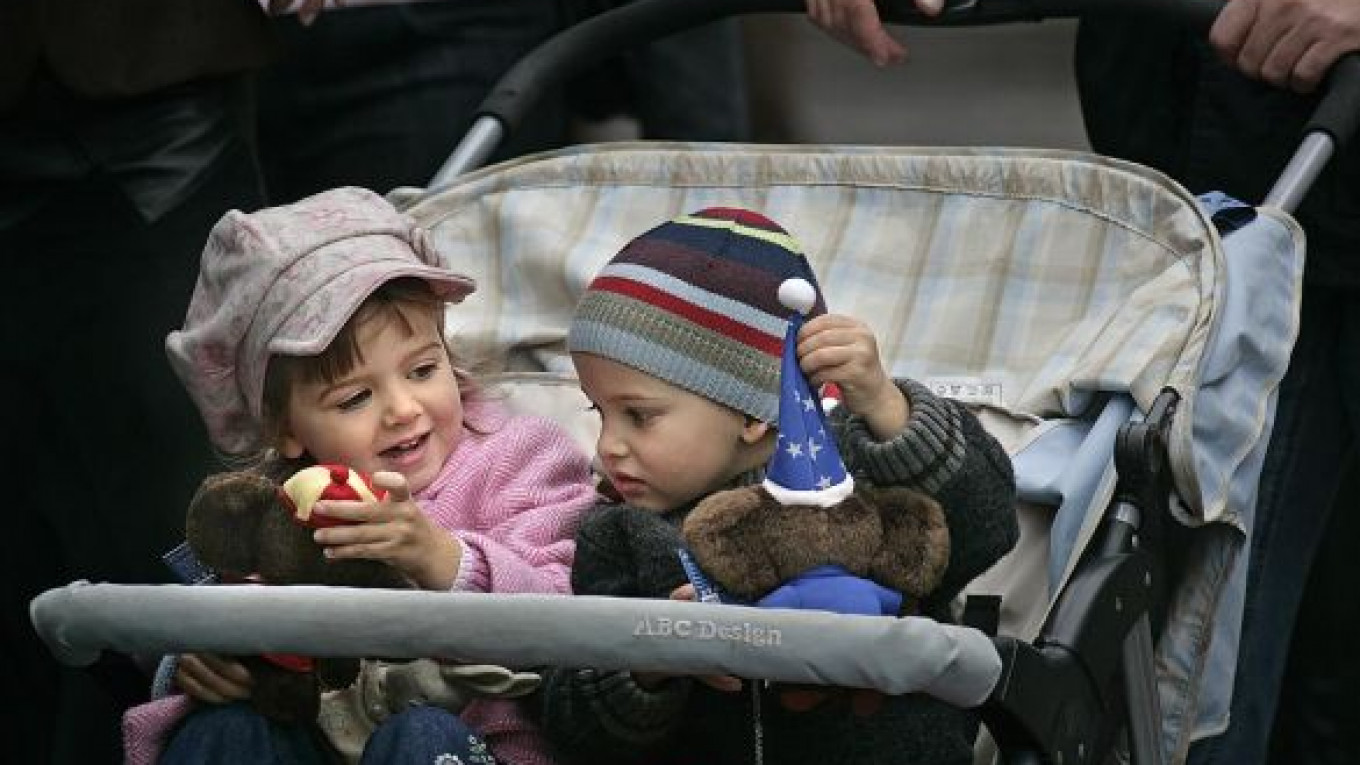Correction appended
Improving birth rates are helping boost Russia's market for children's products, according to the business plan from online children's store MA Navigator.
The market has been growing by an average of 15 percent per year since the Russian government managed to reverse the country's declining demographic trends.
2010 was a record year for births in the country, with 1,788,948 babies born, according to the State Statistics Service. Meanwhile, the rate of natural population loss has been in decline, falling by 70 percent in 2011, according to States Statistics Service figures cited in the plan.
"The market for children's goods in the Russian Federation is developing quickly and has a lot of potential for future growth," according to MA Navigator's business plan. "A saturation of the market is not expected yet."
State statistics show that there are now more than 26 million people under 17 years of age, and they account for 18 percent of the total population.
Experts see great potential in increasing Russians' spending on children. Family spending is currently over $400 per child per year, half of which is spent on children's products in North America and Western Europe.
The total market for children's products in 2011 was 417 billion rubles ($12.6 billion). This number is expected to increase to 483 billion rubles in 2012 and up to 710 billion rubles in coming years, according to the Industry Association of Children's Goods.
Children's clothing and shoes account for more than half of the current market. The fastest-growing segments are products for babies and toys, which are expected to increase 20 percent and 17 percent respectively.
Correction: An earlier version of this story incorrectly stated that the death rate fell 70 percent in 2011. It was the rate of natural population loss, or the sum of the number of births minus the number of deaths, that dropped 70 percent in 2011, not the death rate.
A Message from The Moscow Times:
Dear readers,
We are facing unprecedented challenges. Russia's Prosecutor General's Office has designated The Moscow Times as an "undesirable" organization, criminalizing our work and putting our staff at risk of prosecution. This follows our earlier unjust labeling as a "foreign agent."
These actions are direct attempts to silence independent journalism in Russia. The authorities claim our work "discredits the decisions of the Russian leadership." We see things differently: we strive to provide accurate, unbiased reporting on Russia.
We, the journalists of The Moscow Times, refuse to be silenced. But to continue our work, we need your help.
Your support, no matter how small, makes a world of difference. If you can, please support us monthly starting from just $2. It's quick to set up, and every contribution makes a significant impact.
By supporting The Moscow Times, you're defending open, independent journalism in the face of repression. Thank you for standing with us.
Remind me later.






